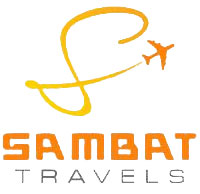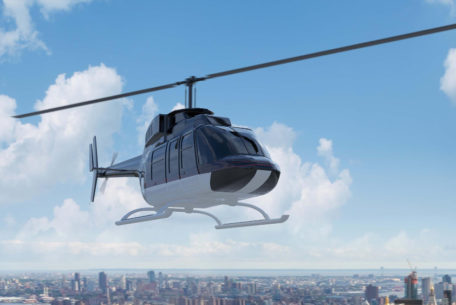
This is not a very strenous trek and passes through forests of Rhododendrons, Nepal’s national flower. Sometimes trees as high as ten flowering season, the landscape is stunning and captures your memory as long as you live. Fish-tail mountain can be viewed closely and Manaslu, Nilgiri, Dhaulagiri and the Annapurna peaks can be seen.
| Group Size | Trek Grade | Maxi. Altitude | Trek Start | Trek End | Hotel Accom. |
|---|---|---|---|---|---|
| 02 – 12 Pax Max | II | 3210 mt. | Naya Pool | Naya Pool | 3 star on BB |
Trek Itinerary:
Day 01: Arrive at Kathmandu and transfer to hotel.
Day 02: Full day city sight-seeing in Kathmandu city.
Day 03: Drive to Pokhara and overnight at hotel, 910 mt. 6 – 7 hrs drive.
Day 04: Drive to Naya Pool and trek start from Birethanti to Tirkhedunga, 1577 mt. 1:30 hrs drive, 4 – 5 hrs walking.
Day 05: Tirkhedunga / Ghorepani 2835mt. 6 – 7 hrs walking.
Day 06: Ghorepani / Excurtsion to Poon Hill 3210 mt for viewing of Annapurna range and trek to Tadapani 2630 mt, 4 – 5 hrs walking.
Day 07: Tadapani / Ghandruk, 1950 mt. 3 – 4 hrs walking.
Day 08: Ghandruk to Birethanti drive or walking and drive to Pokhara and transfer to hotel.
Day 09: Drive to Chitwan Jungle Safari, 3 – 4 hrs drive.
Day 10: Full day jungle activities.
Day 11: Drive to Kathmandu and transfer to hotel.
Day 12: Departure transfer to airport onward to flight.
PACKAGE PRICE IN US DOLLAR PER PERSON
| S.No | Name of Hotel & Standard | Package Price / Per Person |
|---|---|---|
| 01. | Hotel Manaslu Heritage Hotel in Kathmandu | US$ 1440.00 |
| 02. | Hotel Barahi in Pokhara |
Package Includes:
01: Two airport transfer: Airport / Hotel / Airport by private car.
02: One full day city sightseeing in Kathmandu as per itinerary by private car.
03: Kathmandu / Pokhara / Kathmandu by Tourist Deluxe bus.
04: Pokhara / Naya Pool / Pokhara by private car.
05: Pokhara / Chitwan / Kathmandu by Tourist Deluxe Bus.
06: Three night hotel accommodation in Kathmandu in twin sharing on bed and breakfast basis.
07: Two night hotel accommodation in Pokhara in twin sharing on bed and breakfast.
08: 5 days complete trekking arrangement on tea house trekking on full board (breakfast, lunch and dinner).
09: Two night / Three days Chitwan Jungle safari as per programme in twin sharing on full board, all jungle Activities with guide.
10: Trekking English speaking Nepali guide for trekking.
11: One porter for two pax clients for luggage carry.
12: TIMS (Trekkers Information Management System) card for trekking.
13: ACAP (Annapurna Conservation Are Project) permit card.
14: Insurance for trekking crews’only for trekking period.
15: Farewell Dinner before group depart.
16: City entrance fees for sightseeing.
17: City tour guide charge.
18: All Government Taxes & VAT.
Package Exclude:
01: Personal warm clothes, down jacket, trekking boots, stick and Sleeping bag.
01: Alcoholic beverages.
01: Lunch and Dinner while staying in Kathmandu.
01: Tips.
01: International Air Ticket.
General Information for Nepal Trekking:
Fitness:
Obviously the fitter you are before embarking on trekking holiday the more enjoyment you are going to get out of it. Anyone in a robust state of health should have few problems. Basically you should be in condition for the activity you are going to do – a lot of walking but remember you will only be carrying a lightday sac. There will be some steep uphill and downhill climbs but taken slowly they shouldn’t be too much of a problem. It is preferable that you have previous camping and hill walking experience but not essential. Once you decide you are going on a trek then it is wise to begin a fitness programme. The best way to prepare yourself is to take a lot of walks, particularly up and down hills. Jogging, swimming and cycling will also help. It is important to check with your doctor that you are fit to trek to altitude in excess of 15,000 ft. When you book we will advise you on the recommended vaccinations and on what drugs to bring along. We will carry a coprehensive medical kit and your trek leader will be a competent first aider though we cannot assume any liability regarding provision of medical care.
Acclimatisation:
Proper acclimatization is very important as ascending too high, too quickly above 3,500 mt. 10,000 ft,will increase the likelihood of developing altitude problem and our routes are planned specifically to allow a gradual gain in altitude. By slowly gaining height we reap the benefits of a gradual gain in fitness and acclimatization. It is understandable that anyone trekking in the Himalaya for the first time should be a little concerned about acclimatization, but with the sensible approach we take on all of our treks, anyone who is fit and healthy should have few problems.
Trek Grades:
In order to help you in selecting a trek we have given each trek a grade though this is only a simple guide. If you need help in deciding which trek is suitable, please contact to the office.
Grade I. These are our easiest treks involving 4 to 6 hours of walking a day, on good trails with plenty of time for sightseeing. Altitudes generally do not exceed 3,500/11,500 ft. Any active person in good physical condition should easily cope with these treks.
Grade II. Involve walking for 5 to 8 hours a day in more remote country, reaching altitudes of around 4,580 mt/ 15000 ft. A reasonable level of fitness is required.
Grade III. These are harder treks, though still within the capabilities of most people, but you must become quite fit before departure. These treks are generally more demanding and may involve 7 or 8 hour days with altitudes up to 5,500 mt/ 18000 ft.
Grade IV. These are more difficult treks which may take us through rugged country and to areas far from modern communications and transportation. A high level of fitness is required. These treks within the capabilities of most people providing sufficient preparation has been undertaken beforehand. Some days may total 10 hours when crossing passes, which may involve using ropes and mountaineering techniques with altitudes up to 5,500 mt/ 18000 ft.
Equipment:
We provide roomy two man tents, foam mattress, toilet tent, table and chair. Well fitting, comfortable boots are to be preferred over training shoes for the actual trekking and clothing will be required for both extremes of climate, from hot sun when trekking through the lower foothills to freezing temperatures at night when camping in the high valleys (generally above 3,665 mt/ 12,000 ft). Shorts, skirt or lightweight trousers are ideal in the heat of the day along with T-shirts, long sleeved cotton shirts and sun hat. During the evening and at the higher altitudes warmer clothing will be needed, breeches, track suit bottoms, thermal underwear, fleece or wool jumper, wool hat & mitts etc. You will find a down or synthetic filled jacket very useful at higher altitudes. For trek dossier which is provided on booking, inlcudes a very comprehensive clothing and equipment list.
A Typical Day:
Our day begins soon after dawn with bed tea followed by a bowl of water for washing. After packing kit bags breakfast will be ready, perhaps porridge, eggs, bread or chappatis, jam, tea and coffee. The morning walk usually takes 3 to 4 hours and you are free to wander along at your own pace, exploring village and admiring the scenery before stopping for lunch. Lunch always starts with fruit juice followed by rice or potatoes, vegetables, tinned fish or meat and perhaps chappatis and cheese, then fresh or tinned fruit. After lunch we walk for 2 or 3 hours to arrive in camp by 3 or 4 pm. Now there is time to relax, write diaries or have a game of frizbee with the trekking crew. The three course evening meal is served in the mess tent at around 6 pm followed by hot chocolate, tea and coffee. Generally we are in our sleeping bags by 8 or 9 pm. dreaming of our days experience and looking forward to a new adventure tomorrow.
Weather:
Most trekking in the Nepal Himalaya takes place between the beginning of October and the end of May to avoid the summer monsoon. An exception to the rule are the regions of Dolpo and Mustang, two areas which are shielded from the monsoon rains by the main Himalayan peaks to the south and east. For the rest of Nepal, mid October through November and early December tend to be the most settled months, where snow capped peaks stand sharp against brilliant blue skies. Generelly the days are warm, particularly so in the lowlands, while the nights can be cool and at higher altitudes (over 3,655 mt/ 12,000 ft) are very cold. In the spring the climate is much warmer and the days are longer. At lower altitudes the days may be hot and hazy but one soon reaches the higher, cooler air. April and May are the best months to see the alpine flowers and the spectacular rhododendron forests are in full bloom, painting whole hillsides deep red and pink.
How to book:
Complete the booking form and send it to our address with the stated deposit. We will then confirm your place on the trek and send you a trek dossier which includes and extended itinerary and route map, reading list, visa application forms, equipment check list, details of recommended vaccinations, what to include in a personal first aid kit and our recommended insurance application form. Your final balance is due 10 weeks prior to departure.
Group Size:
All of our trekking holidays are based on a minimum group size of 2 people. Our maximum group size is 15 Pax. We have excellent representatives and guides who have been highly trained and are experienced to handle individual needs. Some of our treks will be lead by our excellent local leaders. All speak good English and are highly competent, their knowledge of the customs and cultures will enhance your experience immeasurably. Treks that include a climb are always escorted on a minimum group size of 10 people with two western climbing guides.



